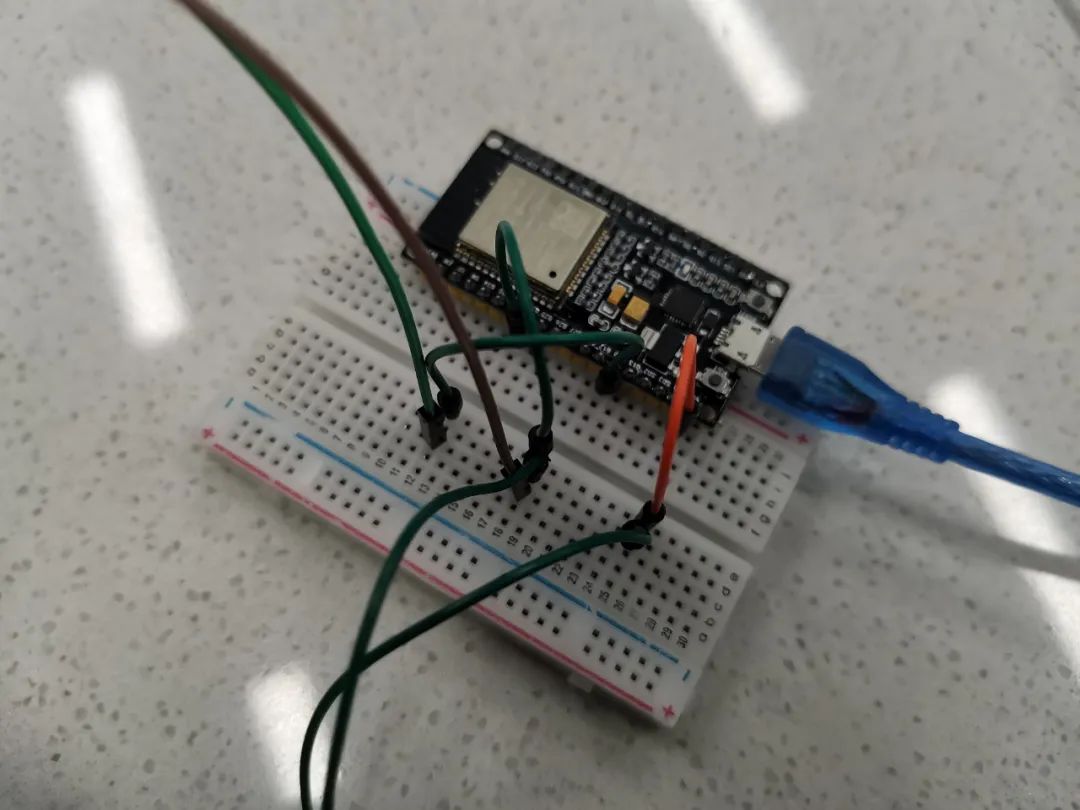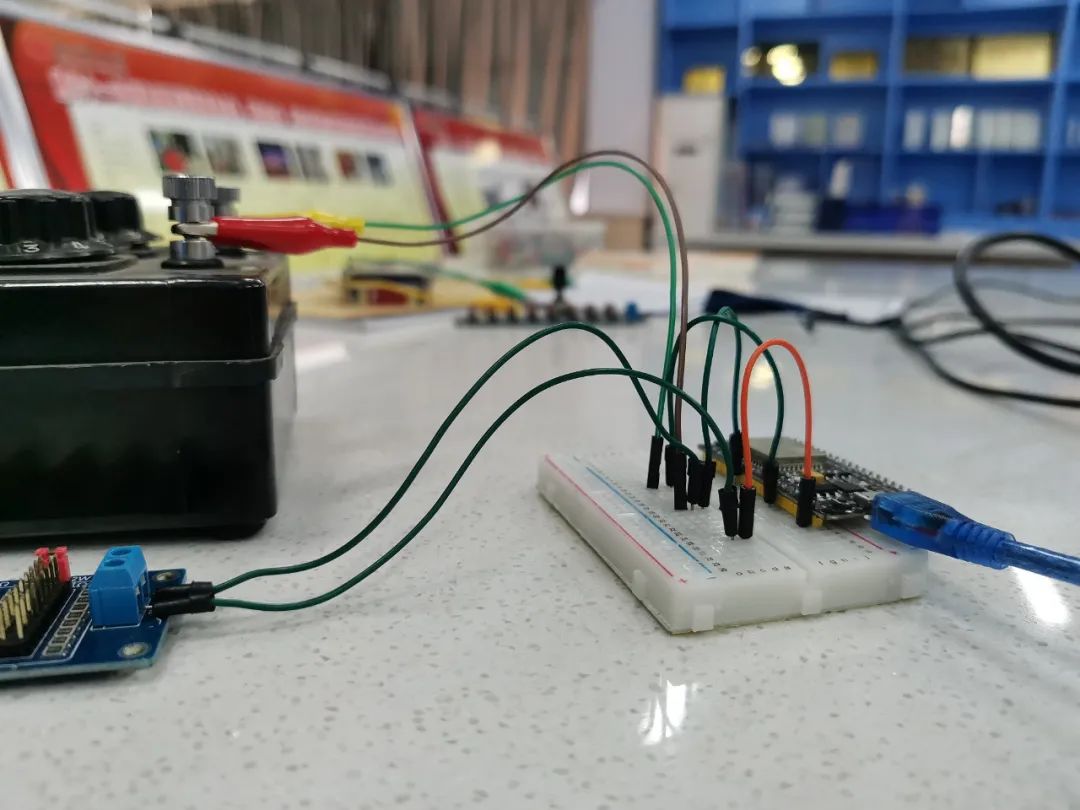
1 Introduction
Recently, during the joint examination, there was a question about measuring the electromotive force (EMF) and internal resistance of a power source using the voltage-resistance method. Considering the authenticity of this experimental background, we validated the experiment using ESP32 and Phyphox.
2 Question Review and Reference Analysis
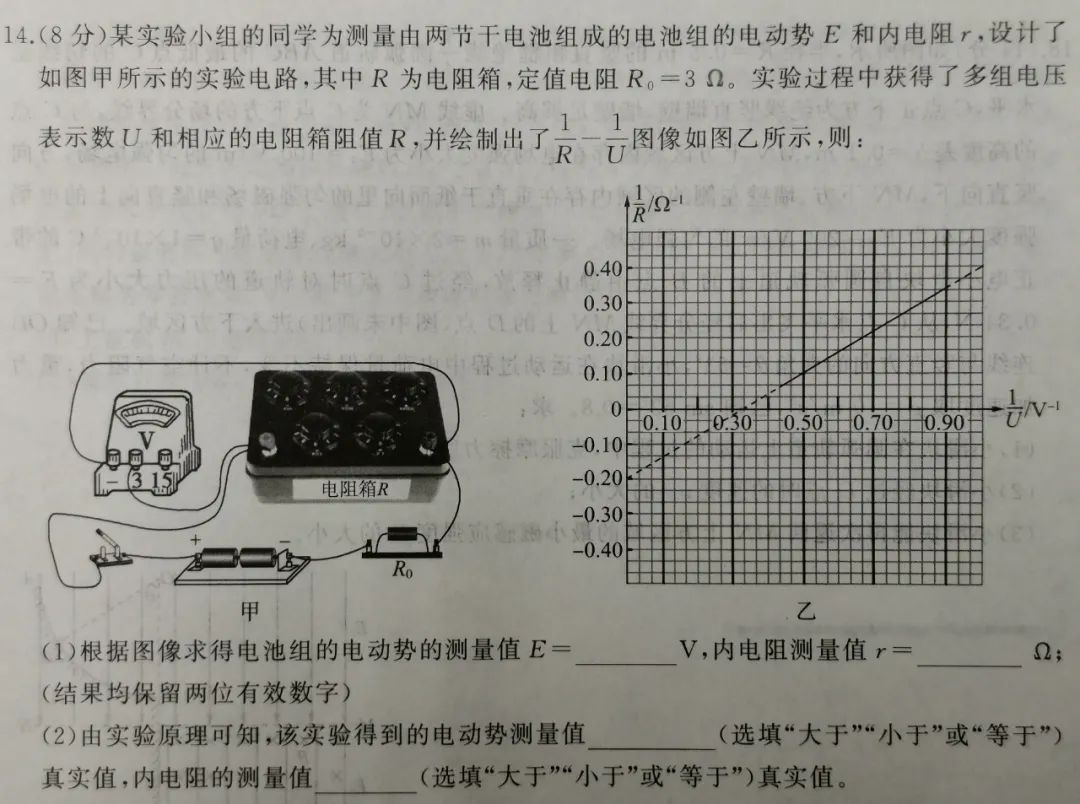
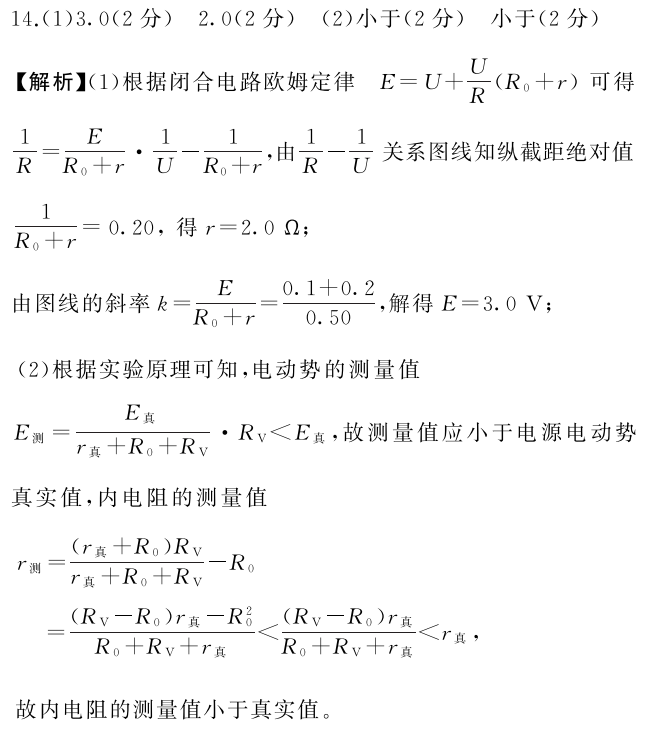
3 Experimental Validation
In this validation experiment, we used the built-in 5V constant voltage of the ESP32 as the EMF of the equivalent power source, and adjusted a programmable resistor board to 10 ohms as the internal resistance of the equivalent power source. We controlled the circuit with a rheostat box, measured the voltage across the rheostat using pin IO33, and then calculated the actual resistance of the rheostat using Ohm’s law in a closed circuit. Finally, we sent the 1/Ω and 1/U data via Bluetooth to Phyphox on a smartphone for graph plotting and data display.
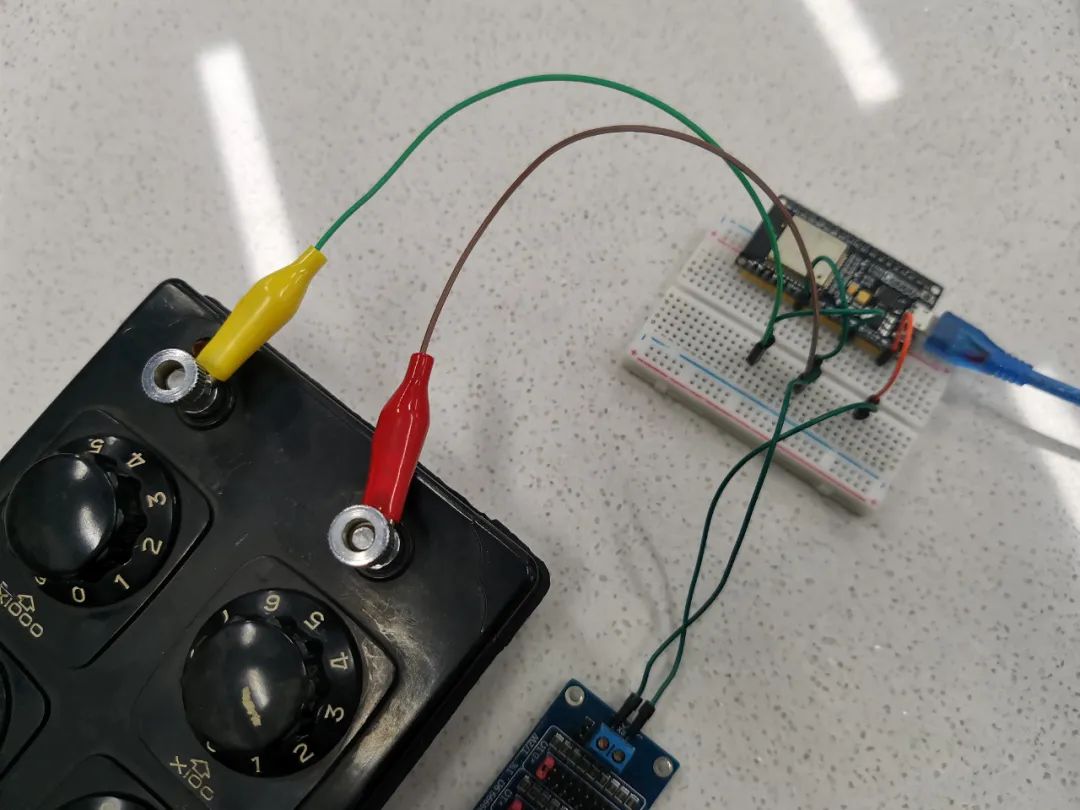
By running the program, we gradually reduced the resistance value of the rheostat box from 9Ω to 1Ω, and Phyphox automatically plotted the graphs of 1/Ω and 1/U for the equivalent power source.
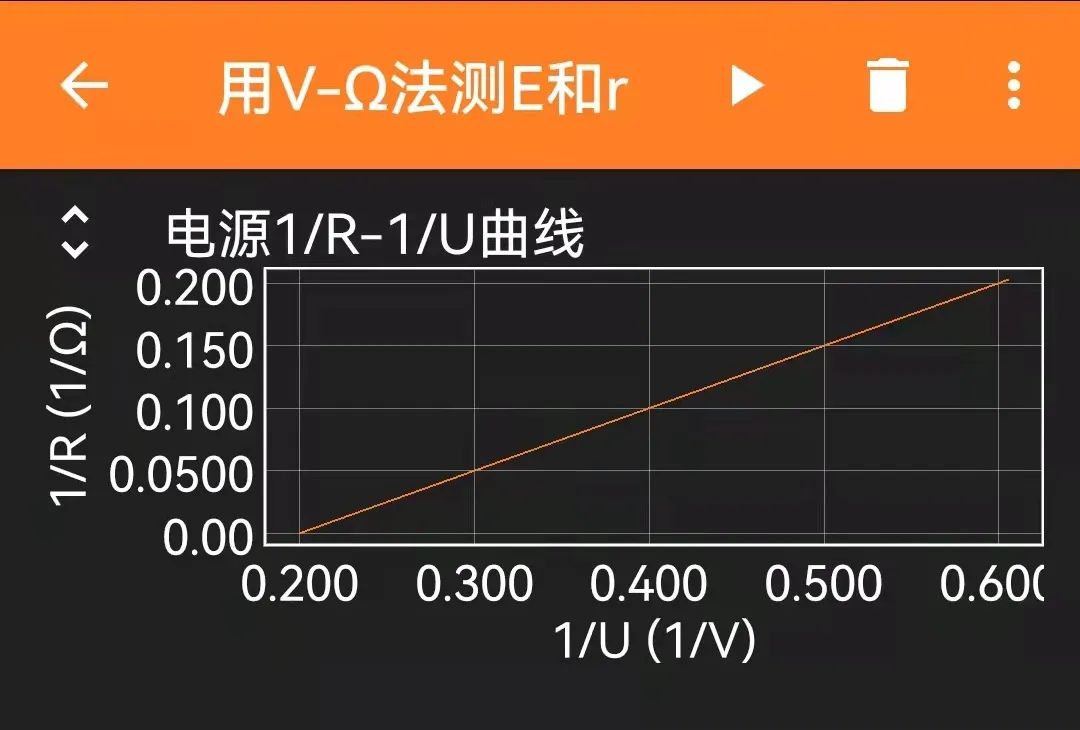
We expanded the 1/Ω and 1/U graphs to full screen and performed linear fitting on the plotted graphs, obtaining a vertical intercept of -0.1 and a slope of 0.5 for the 1/Ω and 1/U graphs.
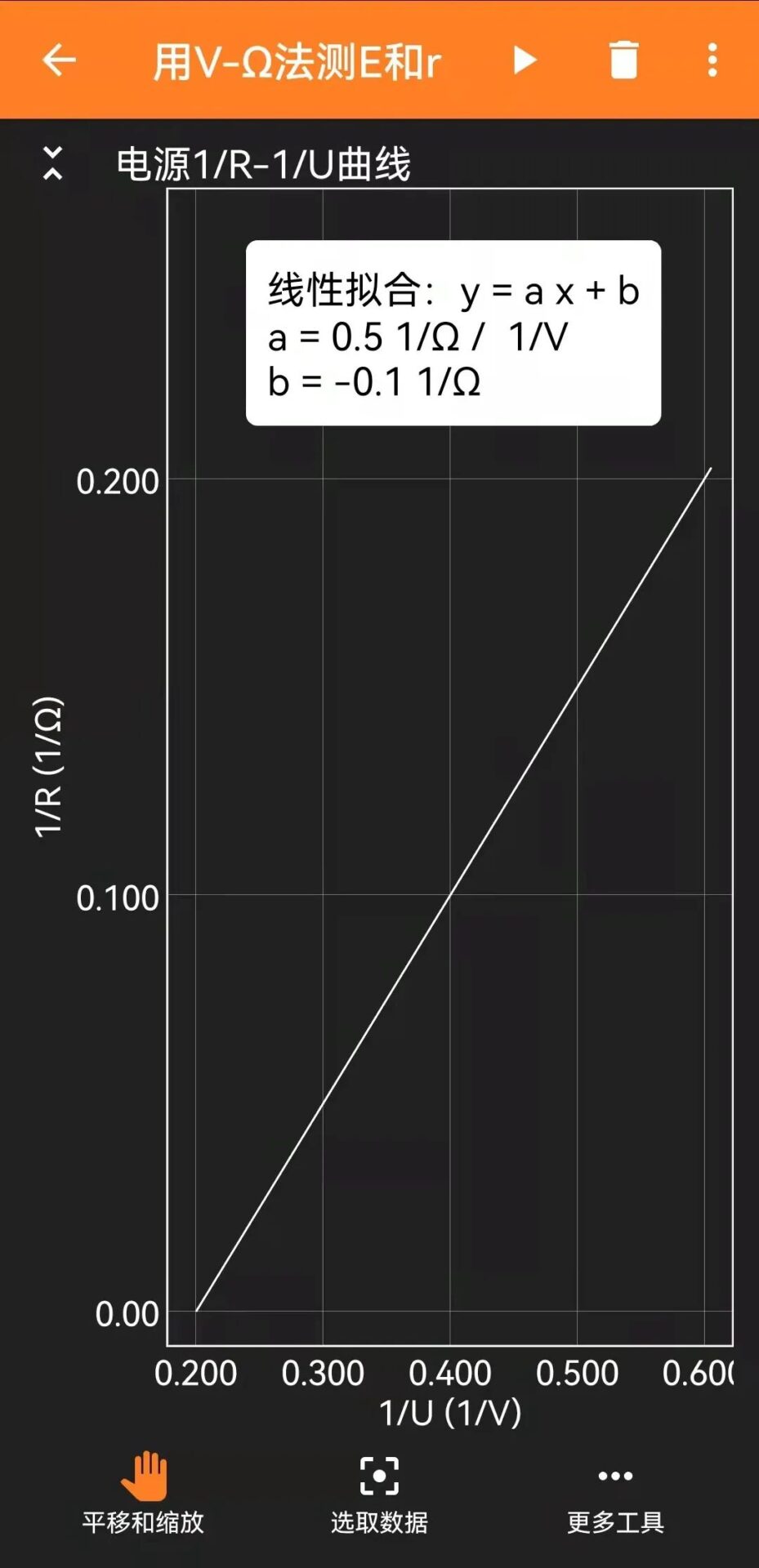
From the physical meaning of the vertical intercept and slope, the internal resistance of the equivalent power source is 10Ω, and the EMF is 5V. The experimental results closely match the preset parameters of the equivalent power source.
4 Insights
In this experiment, initially using a potentiometer to control the circuit led to repeated failures. Later, I realized that the resistance of the potentiometer was too high compared to the internal resistance of the equivalent power source. After switching to the rheostat box, the experiment was successful immediately.
To allow ESP32 and Phyphox to recognize the resistance value of the rheostat box, and to plot dynamic graphs using the resistance and voltmeter readings, calculations needed to be performed in the internal program of the ESP32, and the calculated 1/Ω and 1/U data were sent for graph plotting.
